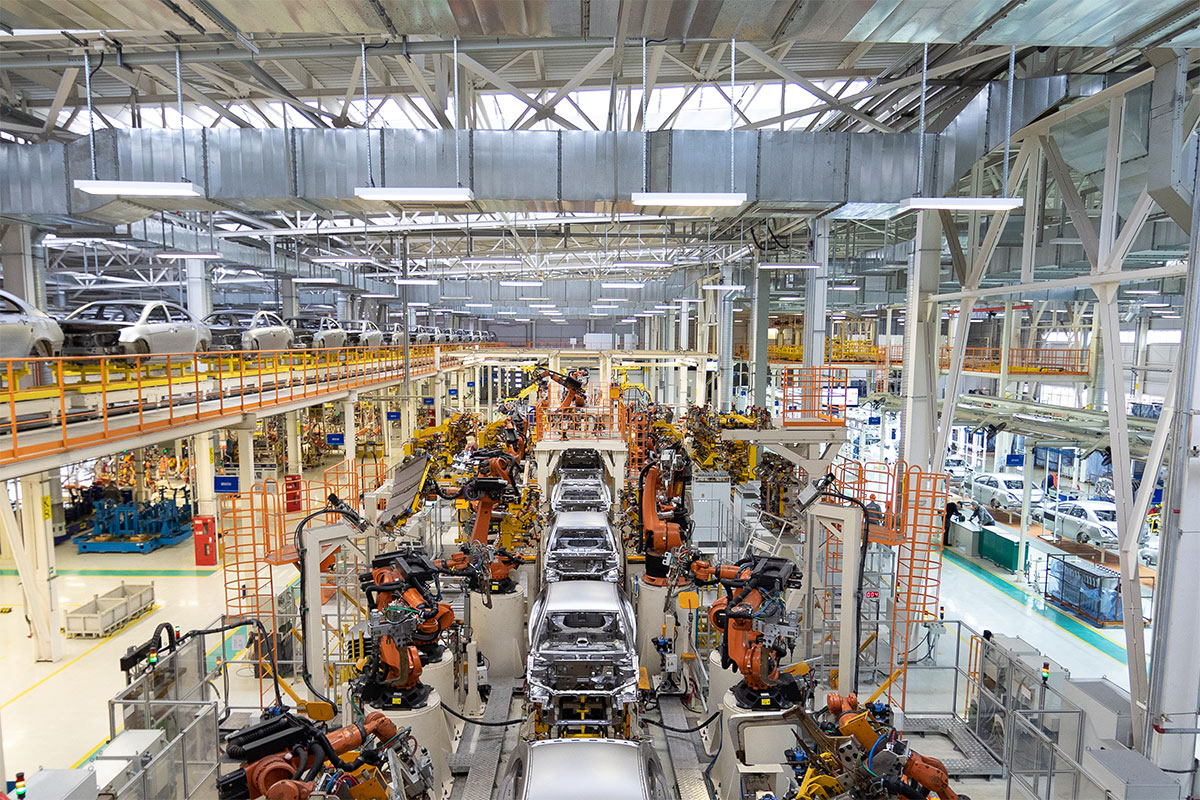India’s manufacturing sector, a key pillar of the nation’s economic growth, is showing signs of a slowdown, raising concerns about the trajectory of the broader economy. Despite maintaining growth for over two years, recent data indicates that the pace is decelerating, as evidenced by a three-month low in the Purchasing Managers’ Index (PMI). This development comes at a time when global economic uncertainty and domestic challenges are weighing on market confidence. The PMI, which has been a reliable indicator of manufacturing health, dipped to 57.5 in August.
While this figure still represents growth, it signals a cooling from the higher levels seen in previous months. This trend can be partly attributed to softening demand, both domestically and internationally. The output and new orders, which are critical components of the PMI, have also seen declines, reaching their lowest points in seven months. These figures suggest that competition within the market is intensifying, forcing companies to adjust their strategies. One of the more troubling aspects of this slowdown is the weakening of international demand. With global economic conditions still fragile amid geopolitical tensions, India’s export market is facing headwinds.
Advertisement
While domestic demand has remained relatively upbeat, it has not been sufficient to offset the dip in international orders. This dual challenge ~ slowing exports and tempered domestic consumption ~ puts added pressure on manufacturers. The impact of these trends on inflation and pricing is another critical factor to consider. Although cost pressures have eased somewhat, manufacturers have been able to pass on higher costs to consumers, resulting in near-record output price inflation. This has allowed companies to maintain, and in some cases, increase their margins. However, this pricing power may not last if demand continues to weaken, which could lead to a more significant slowdown in the sector. The broader economic implications of this manufacturing slowdown cannot be ignored. India’s growth rate has already taken a hit, with GDP growth slowing to 6.7 per cent last quarter from 7.8 per cent.
A continued slowdown in manufacturing, which contributes significantly to overall economic activity, could further dampen growth prospects. The Reserve Bank of India (RBI) may need to respond with monetary policy adjustments, such as the anticipated interest rate cut, to stimulate demand and prevent a deeper downturn. Despite these challenges, there are reasons to remain cautiously optimistic. The resilience of demand, even amid a slowdown, indicates that the fundamentals of the economy are still strong. Additionally, the fact that manufacturers continue to hire, albeit at a slower pace, suggests that businesses are not yet ready to scale back their operations significantly. This hiring trend reflects confidence in the long-term outlook, even if short-term challenges persist. Looking ahead, the key will be how well India navigates these headwinds. Policymakers will need to balance stimulating growth with managing inflation and maintaining fiscal discipline. For manufacturers, the focus will likely be on enhancing competitiveness and exploring new markets to offset any further declines in demand.









